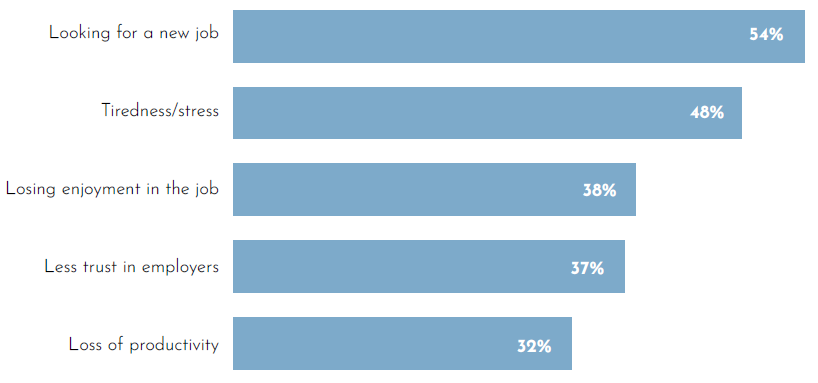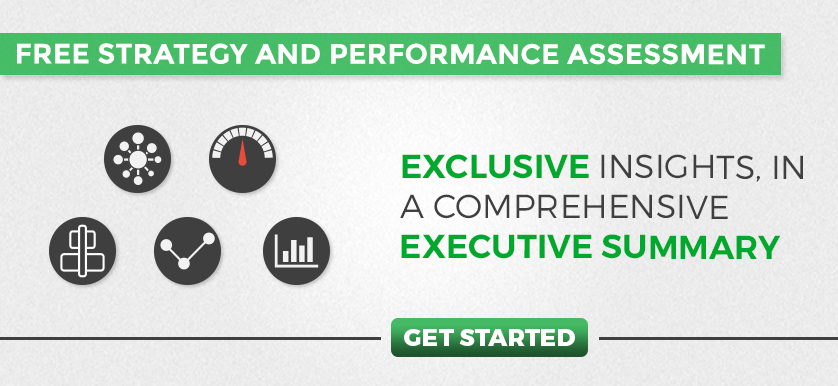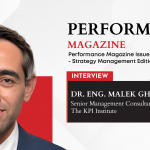Empowering Employees for a New Strategic Vision and Adaptability Through Change Management

Image Source: Freepik
The transformative shifts occurring today compel employees to recalibrate their thinking, embrace cutting-edge technologies, adapt behaviors, and operate in new environments. While these changes hold the promise of progress, they simultaneously introduce disruptions.
Effective change management is a critical factor for organizational success in this dynamic scenario. Change management relies on strategic leadership, as highlighted in the Certified Agile Strategy Execution course offered by The KPI Institute (TKI). This program emphasizes the importance of shaping a strategic vision and guiding employees through essential actions for its realization. It involves anticipating change, maintaining flexibility, and empowering others to drive strategic change when needed.
However, TKI’s State of Strategy Management Practice Global Report – 2023 reveals a stark reality in the business environment: 34% of professionals identify poor management of changes as a significant contributor to strategic failure. Meanwhile, on the employees’ side, the challenge of change fatigue emerges during transformation changes.
Change Fatigue
Even with the most adept strategic leadership, the continuous wave of changes can affect employees’ resilience, impacting their performance and engagement. As outlined in Capterra’s 2022 Change Fatigue Survey, the prevalent consequences of change fatigue on employees include loss of productivity, less trust in the employer, and losing enjoyment in the job (see Figure 1).

Figure 1. Most Common Effect of Change Fatigue Among Respondents Experiencing Change Fatigue | Source: Adapted from Capterra’s 2022 Change Fatigue Survey
Leadership, therefore, must prioritize addressing their employees’ readiness for change to mitigate resistance and prevent change fatigue.
Read More >> Embracing Agile Strategies for Organizational Success
Drawing from a study featured in the International Journal of Ethics and Systems, the influencers of this readiness are internal perceptions of competence, relatedness, and autonomy, as well as the knowledge-sharing models employed in the organization.
When employees feel competent and confident in their skills, the likelihood of adaptation to change significantly increases. Similarly, individuals who hold a sense of connection with their colleagues and the organization find themselves better equipped to weather change collectively. Employees who feel independent and in control of their work naturally take ownership of the change process. This autonomy empowers them with a sense of purpose.
Lastly, the seamless integration of structured documentation and dissemination of explicit knowledge with human-centric exchanges enhances information accessibility and fosters a collaborative and interconnected work environment.
A deep understanding of these factors enables leaders to implement interventions that foster a positive and adaptive organizational culture. This, in turn, strengthens teams against change resistance and fatigue. Examples of such measures are the following:
- Prioritize skills development and invest in training programs to enhance employees’ confidence in their skills and ability to adapt to changes.
- Foster a workplace culture that emphasizes collaboration and communication, reinforcing a sense of relatedness among employees.
- Delegate responsibilities, involve employees in decision-making, and offer opportunities for autonomy within the context of change initiatives.
- Establish a comprehensive knowledge-sharing environment to ensure that employees have access to information and resources essential for a seamless change.
According to TKI, when strategic initiatives are expected to extend beyond incremental adjustments—delving into changes that not only redefine the “what” but revolutionize the “how”—then an organization must implement a meticulously crafted approach to communication and engagement. It should be able to counteract its employees’ natural resistance to change and sustain productivity levels.
Read More >> The Power of Change Management in Strategy Execution
Leaders should use transparent and consistent communication to keep employees informed about upcoming changes, set up feedback mechanisms that allow employees to express their concerns and suggestions, and, finally, acknowledge and recognize employees for their resilience.
The complexities of change management require leaders to be proactive in addressing the concerns of their teams. To mitigate negative responses from employees during periods of change, leaders must prioritize equipping their workforce with the essential resources and knowledge necessary for adaptation. Furthermore, leaders must embody the change they seek, serving as models of adaptability.
Effective change management coupled with supportive leadership are the keys to sustaining optimal employee performance and satisfaction in the ever-evolving business environment.
**********
Editor’s Note: This article was originally published in Performance Magazine Issue No. 29, 2024 – Strategy Edition.

Tags: agile strategy, change fatigue, Change Management, Leadership




